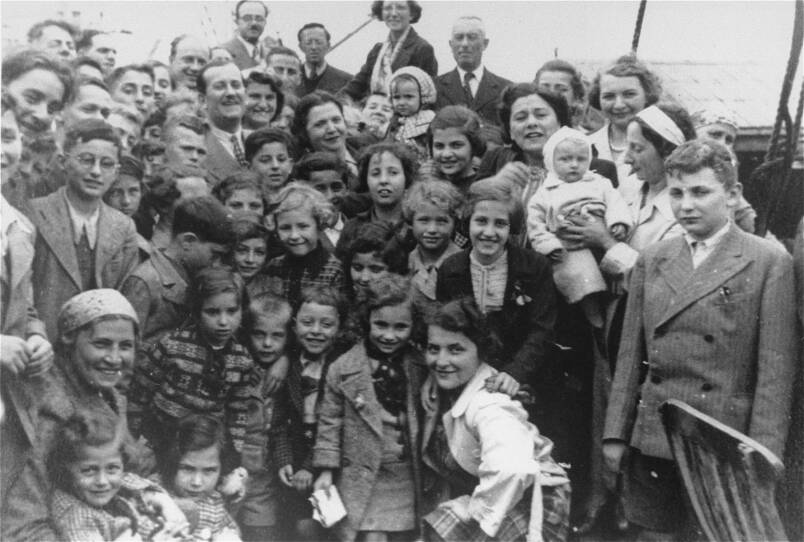This week, GBH Executive Arts Editor Jared Bowen recommends three options for history lovers.
“All is Calm” at Greater Boston Stage Company
Playing at the Greater Boston Stage Company through Dec. 23
“All is Calm” recalls an astounding moment in history when Allied and German soldiers met in “No Man’s Land” and laid down their arms to celebrate Christmas together.
“The show [begins] with the onset of war, and you have these troops that are all hopped up to just go defend their country, these young men who were eager to be patriots and defend their fellow man. And so we get these patriotic songs,” Bowen explains. “But quickly, as this show takes us into war and war takes its toll on these men — these men who are far away from their families and their friends and their loved ones — we start to get a sense of belonging that they feel.”
The production combines period songs and firsthand accounts of this remarkable event, written by Peter Rothstein with vocal arrangements by Erick Lichte and Timothy C. Takach and music direction by Matthew Stern. This cast features 10 performers who beautifully blend World War I patriotic tunes, trench ballads, medieval melodies and Christmas carols from England, Wales, France, Belgium and Germany. Featured songs include: "It's A Long Way to Tipperary," "We Wish You a Merry Christmas," "Angels We Have Heard on High," "Good King Wenceslas," "O Holy Night," "Auld Lang Syne" and other holiday favorites.

“WITNESS,” a virtual documentary production
Presented by Arleken Players Theatre and Zero-G Lab through Jan. 23
“WITNESS,” the latest project from the Arlekin Players Theatre’s Zero Gravity (zero-G) Virtual Theater Lab, is a new documentary theater piece about Jewish immigration in the face of antisemitism. “WITNESS” brings actors and audience members together from around the world for a shared immersive experience set on a boat in digital space. The piece is inspired by the journey of the MS St. Louis, which left Hamburg in 1939 with over 900 Jewish people on board and headed to Cuba only to be turned away, leaving the passengers stranded with nowhere to go and no escape. “WITNESS” shares stories of Jewish immigrants from around the globe through an interactive virtual theater experience at the nexus of film, theater and video games.
“WITNESS” was created through interviews and the use of historic materials, primarily sourced from the archives of the United States Holocaust Memorial Museum. It has been woven together into a dramatic documentary script by playwright Nana Grinstein, with additional writing by dramaturg Blair Cadden and Arlekin’s artistic director and “WITNESS” director Igor Golyak.

Netherlandish art at the MFA
On view now at the Museum of Fine Arts
From the end of the Middle Ages to the 18th century, the Netherlands — which then spanned modern-day Belgium, Luxembourg and the Netherlands — was an important artistic center whose influence was felt throughout Europe. In the late 16th century, the predominantly Protestant Northern Netherlands gained independence from Catholic Spain and formed a self-governing republic. Over the course of the 17th century, the Dutch Republic, with its innovative stock market and burgeoning global trade network, became an economic world power. Nourished by a vibrant economy, artists and artisans expanded the possibilities of art and craft, leading to innovation and renown across many artistic media. Although the Southern Netherlands remained under Spanish rule, members of the Hapsburg family supported many artists at their court in Brussels, and the Flemish city of Antwerp flourished as a center of painting, glass, print, tapestry and book production.
The MFA has one of the most important collections of Netherlandish Art in the United States with deep holdings of Flemish and especially Dutch art. Following the remarkable gift of the Van Otterloo and Weatherbie Collections, the MFA now has high-quality examples in every category of painting. The Dutch collection is particularly strong in early pictures by Rembrandt, genre scenes, still lifes and landscapes. The Flemish collection has excellent examples of portraiture and includes paintings by Rubens, Van Dyck, Jordaens and Brouwer. The early Netherlandish pictures are few but superb, including major works by Rogier van der Weyden, Hans Memling and Lucas van Leyden. The collection also boasts a fine group of works from the 19th century, including notable works by Anton Mauve and Vincent van Gogh.
The MFA’s collection of Dutch and Flemish art is the essential foundation for the Center for Netherlandish Art, creating opportunities for innovative scholarship, conservation research, interpretation and public engagement.
What art are you experiencing this winter season? Tell Jared about it on Facebook or Twitter!




